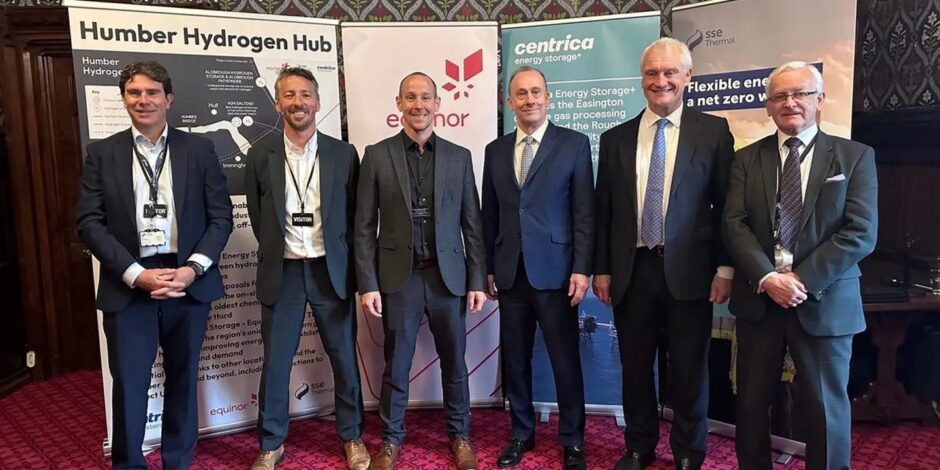
Equinor, Centrica and SSE Thermal have launched a collection of low-carbon hydrogen projects planned for the Yorkshire and Humber region in northeast England.
The Humber Hydrogen Hub projects were launched in UK Parliament on May 22.
The plans include the transformation of the Easington gas terminal into a blue and green hydrogen production facility in multiple stages under the H2H Easington proposal being developed by Equinor and Centrica. The two companies signed a co-operation agreement on the facility’s transformation in 2022.
They said in their May 22 announcement on the launch of the hub that they had since carried out detailed engineering studies to assess projects that could produce up to 1.2GW of blue hydrogen and up to 1GW of green hydrogen at Easington.
Under their plans, initial projects would be commissioned by the end of this decade, and expansion would follow in the 2030s.
In order to help advance these plans, the companies said they had also submitted proposals for a green hydrogen electrolyser to the UK Government as part of the second Hydrogen Allocation Round process. The Hydrogen Allocation Round is a funding mechanism aimed at spurring the development of low-carbon hydrogen production in the UK.
Projects that meet the eligibility criteria of each allocation round can apply to receive funding over a 15-year period.
If the electrolyser application for the Easington project is successful, start-up of the electrolytic hydrogen system would be targeted by early 2029.
The partners are aiming for the project to displace current demand for natural gas and reduce the Easington site’s carbon dioxide (CO2) emissions by 100,000 tonnes per year (tpy).
Potential uses for the low-carbon hydrogen include using it for sustainable aviation fuel (SAF), the partners said, adding that this would be key to facilitating the aviation industry’s energy transition.
Previous announcements related to H2H Easington have pointed to the fact that the site is located close to some major offshore wind farm developments, offering potential for green hydrogen production.
The area, Equinor and Centrica said in 2022, had also been earmarked as one of the landing points for a pipeline that would transport CO2 for storage under the seabed as part of the East Coast Cluster carbon capture, utilisation and storage (CCUS) initiative.
Under their other Humber Hydrogen Hub plans, the partners said this week that they were also exploring the development of a 45-km (28-mile) hydrogen pipeline.
This would link H2H Easington to Equinor’s proposed H2H Saltend hydrogen production facility at Saltend Chemicals Park, and to Equinor and SSE Thermal’s proposed hydrogen storage facility at Aldbrough.
There is also potential to connect this pipeline to the Project Union gas network in the future as part of an expansion across the wider Humber region, according to the announcement.
A consultation is currently underway on the proposals for hydrogen storage at Aldbrough, which would use an existing gas storage site.
The site contains underground salt caverns that the partners described as “geologically unique”. They expect that using the caverns for hydrogen storage will help to balance the fluctuating supply and demand associated with a future hydrogen economy while also improving local energy security.
“This is a unique opportunity to link these key sites in the Humber, pairing hydrogen production with users and storage sites to create the foundational requirements for an expanding hydrogen economy throughout the 2030s and ‘40s,” stated the director for hydrogen at Equinor’s UK Low Carbon Solutions unit, Dan Sadler.
Recommended for you
